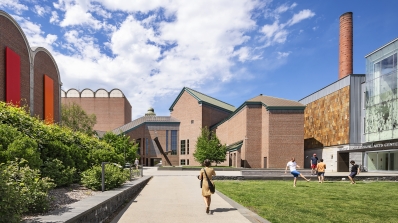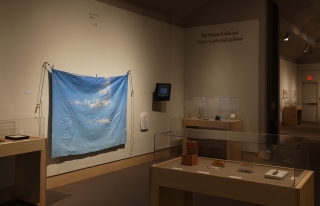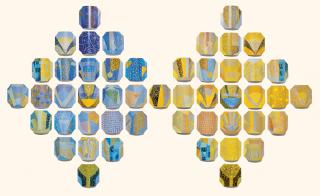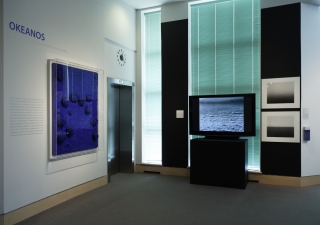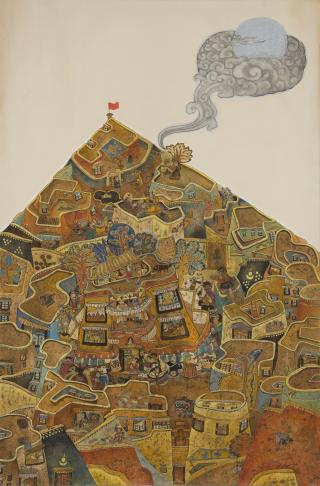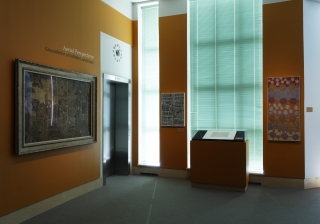Exhibitions Archive
Fluxus and the Essential Questions of Life
This traveling exhibition and publication are drawn from the Hood Museum of Art’s George Maciunas Memorial Collection of works by Fluxus artists, enriched with loans from the Museum of Modern Art, Harvard University, and the Walker Art Center. Intended to provide a fresh assessment of Fluxus, the installation is designed to encourage experiential encounters for the visitor. The 1960s–70s phenomenon that was Fluxus resists characterization as an art movement, collective, or group, and it further defies traditional geographical, chronological, and medium-based approaches. The fundamental question—“What’s Fluxus good for?”—in fact has important implications for the role of art today. The function of Fluxus artworks is to help us practice life; what we “learn” from Fluxus is how to be ourselves.
Esmé Thompson
Esmé Thompson envelops her creative enterprise in the colors and complexities to be found in the visual “surfaces” of textiles, illuminated manuscripts, and the botanical world. Her art also embraces the work of other painters whom she admires, particularly Renaissance masters and the remarkably unique paintings French artist Edouard Vuillard (1868–1940). This exhibition of twenty-eight paintings and collages, plus a recent work in glazed ceramic, focuses on the last five to six years of her creative practice and demonstrates the full flowering of her interest in design and pattern. It is also a tribute to the artist’s career as a professor in Dartmouth College’s Studio Art Department, where she has worked for the last three decades.
Okeanos, International + Contemporary Relflections on the Sea
For anyone who has witnessed its sublimity, above the surface or at its depths, the ocean (from Greek “okeanos”) leaves a powerful, sensuous impression. Contemporary artists Yves Klein, Jennifer Moller, and Hiroshi Sugimoto each reflect upon the experience of ocean via distinct media: Klein with his hyper-saturated, textured canvas; Moller with her darkened, black and white video footage; and Sugimoto with his abstracted photographs of water and air. Whether captured in paint or film, or concentrating on water’s depth or surface, substance or void, stillness or motion, the monochromatic representations of sea depicted by each of the international contemporary artists in this exhibition demonstrate that the experience of ocean is universal.
Tibetan Artists Respond
Tradition Transformed
Contemporary Tibetan artists are in a precarious position. While their work is informed by Tibetan artistic traditions, the majority of these artists do not live in Tibet, and some never have. Their challenge is twofold: as they forge a name for themselves in the competitive art world, they must also try to find their own place within Tibet’s rich and formalized artistic legacy. This exhibition features artists who grapple with issues of cultural and artistic negotiation and who work with traditional forms in innovative ways. The artists submitted new and recent works to the exhibition that highlight their styles and range.
Grounded in an Infinite Landscape
Aerial Perspectives
The works of art in this exhibition are all abstracted depictions of landscapes from an aerial perspective, a point of view that draws us into the work through an intensified experience of the entire composition. They all share the same basic focus, evoking some geographical construct or another, and a sense of place. While they have a visually abstract quality, this does not mean that we become lost. Rather, the means through which the artists masterfully render their subjects (including line, color, light, shadow, volume, and depth) encourage us to take an active role in these works’ realization. They ground us, ironically, as we examine them from every angle, following the symphony of marks along the surface and subconsciously constructing the imagined landscape both within and beyond the edges of the frame.
